Group fitness is a popular way to improve fitness. Group exercise is a generic term used to describe fitness industry exercise classes characterised by a group format, and an instructor leading the class.
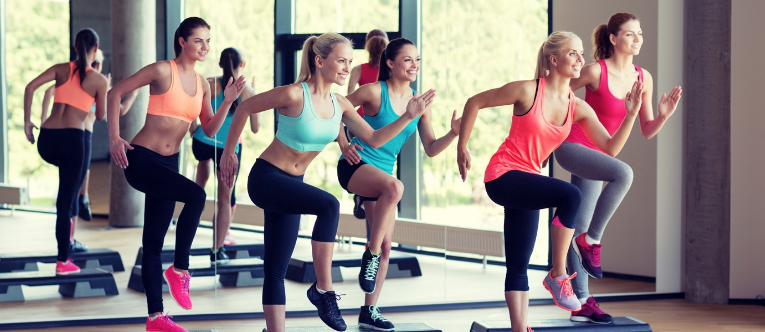
Exercising in a group to music became popular in the 1980’s and has continued to be a major source of income for gyms, fitness facilities and fitness trainers. Class type popularity has varied over the years, starting with a more freestyle approach and progressing to include many different types of classes to suit different needs. Many factors impact on the enjoyment level of participants, including the music and the instructor’s personality. Currently F45, Fitstop, CrossFit and Bootcamps classes are very popular. Become a group fitness instructor with a Certificate III in Fitness covering the appropriate specialisation units.
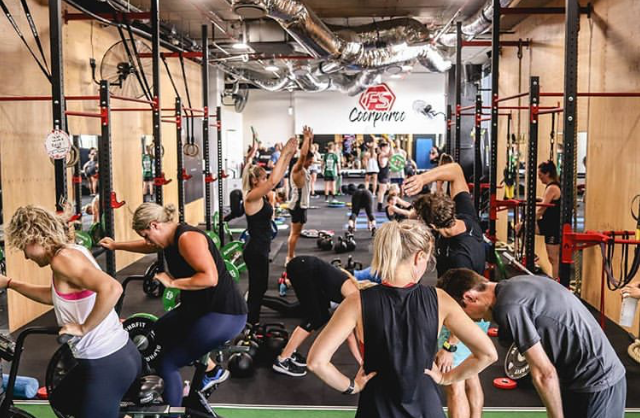
The Evolution of Group Exercise to Music
Group exercise to music was commonly named aerobics in the past. This may have been misleading. The word aerobic implies that the body is using oxygen to produce energy, but as with many other exercises, this is not always the case in group exercise to music classes. There are a wide range of classes of various intensities and types, which ensures that participants are not always using the aerobic energy system. Also some classes, such as boxing classes, are performed to music but are not the traditional style of aerobics that encompasses grapevines etc.
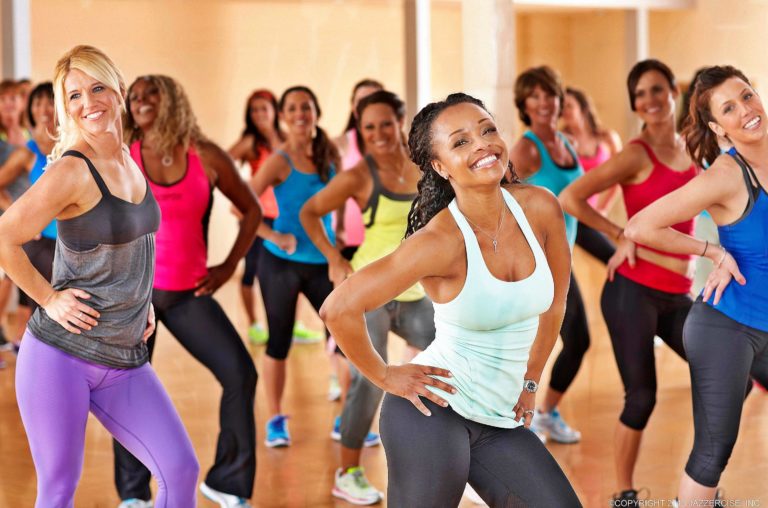
There are many different types of group exercise to music classes but generally they all involve:
- Warm-up phase
- Conditioning phase
- Cool-down phase
Some common group exercise classes include:
- Beginners
- Circuit
- High impact
- Low impact
- Step
- Hi/low
- New body
- Boxing
- Cycle
- Freestyle
- Strength
- Core
- Hybrid
- Rowing
- Metcon
- Pre-choreographed classes (Les Mills, Zumba)
Pre-choreographed classes
Since the late 90s when Les Mills became popular, pre-choreography has been a source of debate among fitness professionals. Today pre-choreographed and pre-formatted class options are flourishing. E.g. Zumba, R.I.P.P.E.D., Turbo, Kick, Group Power. Many thought the pre-choreography idea would never work.

All group fitness instructors have the same goal: To help people find fitness in a formula, they enjoy consuming, so they keep coming, get fit and live a healthy life.
Benefits of Group Fitness
There are many benefits to group exercise classes. Some of these include:
- GROUP FITNESS CAN BOOST MOTIVATION AND CREATE ACCOUNTABILITY
Group classes are great for motivation. An instructor tells you what to do and provides energy. Participating with others increases performance and takes away some of the mental hard work. Some studios require bookings and even charge a fee for missing a class if you’ve signed up in advance.
- GROUP FITNESS IS FUN
One of the most popular reasons for taking a group fitness class is they’re fun. With music playing and everyone else working hard, it can feel more like a party than a workout. The fun aspect of group fitness is particularly evident in a variety of dance-fitness classes. Bodyjam, Zumba and Jazzercise are popular nationwide “dance-style” options.
- SOCIAL
Group fitness is built around a social atmosphere. Experience exercise in a group. Work together to a common goal. This is particularly important in the current world where people are increasingly isolated. Cycling, step aerobic classes, are built around high-energy music and a social atmosphere.
- WORKING OUT IN A GROUP CAN PUSH YOU
Everyone is “in it together” in a group fitness class, which naturally lends itself to camaraderie among members. For those who are competitive, the social aspect is valuable because with a little camaraderie comes friendly competition, pushing participants to work harder.
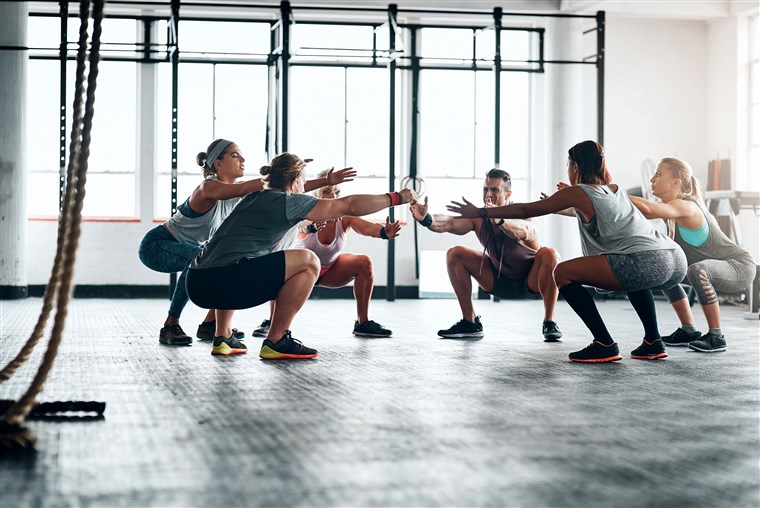
What is the Difference Between Group Fitness and Group Personal Training?
There is a difference between group personal training and group exercise classes. In a group personal training setting, clients are often doing different things at their own customised level of fitness or ability. A group personal training class looks like a group of people doing different exercises together at their own rate of speed, intensity, and ability. Group exercise classes are typically larger, while group personal training classes tend to be smaller in scale, with a more individual focus. They are also more uniform for the group and thereby less customised to individual requirements.
Group Personal Training is where individuals with a similar exercise goal come together in one location for a specified period of time with an instructor to complete an exercise class. Group personal training has become a buzzword in recent years. People want personalised workouts and individual attention without paying the hefty price of one-on-one training.
Fitness Australia currently recognise these exercise professional roles:
(a) Personal Trainer (Certificate IV in Fitness)
- Typically works independently (may be self-employed or an employee) and may support or lead other registered exercise professionals
- Typically practices within a fitness facility but also in a wide variety of other environments (including unpredictable settings such as outdoor locations, client homes, community spaces, workplaces)
- Provides individually tailored client assessments, program development, instruction and demonstration, supervised exercise sessions and client reviews.
- Maintains consistent monitoring and support for clients (including between sessions) May deliver exercise programs designed for participation by a group of clients with a mix of ages/fitness levels
- Typically manages both business and client needs e.g. promoting and selling services, as well as delivering services
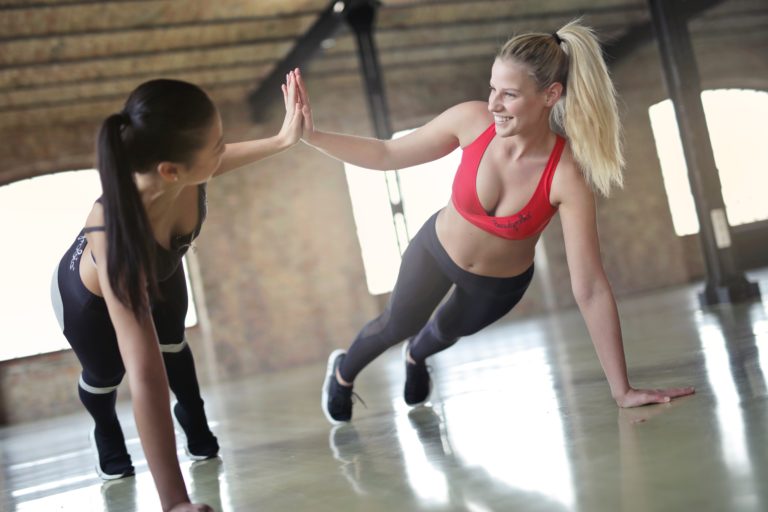
(b) Gym Instructor (Certificate III in Fitness with Gym Instructor specialisation units)
- Works within predictable settings such as a fitness facility, recreation or community facilities
- Provides individually tailored client assessments, program development, program demonstration and client reviews
- Provides supervision of a facility or service (i.e. observing client use of facilities, providing technique correction as needed, keeping equipment clean/tidy/well-maintained, being available for customer inquiries or assistance)
- Typically reports to a manager but is not always directly supervised during work duties
(c) Group Exercise Instructor (Certificate III in Fitness with Group Fitness Instructor specialisation units)
- Delivers exercise sessions designed for participation by a group of clients with a mix of ages/fitness levels (i.e. not tailored to individuals)
- Exercise sessions delivered may be freestyle, pre-choreographed or circuit style
- Instructs and demonstrates complete exercise sessions to groups with limited individual interaction
- Instructor typically practices independently and commonly reports to a manager
- Commonly conducts sessions that are part of an overall regular timetable of sessions provided by the employer organisation
- Typically instructs sessions in predictable settings such as group exercise studios within fitness facilities

(d) Group Exercise Leader (Group of units from the Certificate III in Fitness)
- The scope of this role is limited to leading pre-designed group exercise sessions.
The Fit Education Certificate III in Fitness includes all specialisation units for you to work as either a Gym Instructor or Group Fitness Instructor.
Becomes a Group Fitness Manager or Personal Training Manger by studying a Diploma of Fitness.
